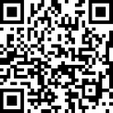| AIRWAY MANAGEMENT: NONINVASIVE INTERVENTION | 无创气道护理介入 |
| Assessment | 评估 |
| 1. Assess for possible impairment of airway clearance: increased work of breathing or inability to clear copious or tenacious secretions by coughing. | 评估可能的气道清理损伤:呼吸功增加,或无法清除或咳出粘液。 |
| 2. Observe for signs of airway obstruction. | 观察气道梗阻体症 |
| 3. Assess client's baseline knowledge of positioning, CPAP/BiPAP, and PEFR. | 评估病人体位、稳定气道正压/双水平式呼吸道正压和呼气流速峰值知识。 |
| 4. Review physician's order for CPAP/BiPAP and predicted values for PEFR. | 核对医嘱及预期值,检查CPAP/BiPAP和PEFR。 |
| Implementation | 实施 |
| 1. Use Standard Protocol. | 使用标准仪式 |
| 2. Correct positioning of client: | 正确体位 |
| A. Sitting | 坐位 |
| 1. Semi-Fowler's or high Fowler's, sitting on side of bed, or in chair with elbows resting on knees. Clients with COPD may benefit from leaning over table with arms propped up. | 半坐卧位或高坐卧位,坐于床缘,或坐椅,两肘置于膝盖。慢性阻塞性肺病病人可背靠桌子。 |
| B. Standing | 站位 |
| 1. When client who is ambulating experiences shortness of breath or the need to cough, encourage a position that supports client. | 当病人走动时气促或要咳嗽时,可倚靠物体 |
| C. Supine | 仰卧 |
| 1. Determine if two pillows or flat is more comfortable for client. Turn at least every 2 hours to encourage secretion drainage. Consider maneuvers to drain areas of lungs with retained secretions by gravity if tolerated by client. If unilateral reexpansion is needed, have client lie with side requiring expansion up: "good side down, affected lung up." | 确定双枕或平卧时病人是否更舒适。至少每两小时翻身一次,促进分泌物排出。病情许可时,可通过体位引流法使肺区分泌物排出体外。如需单侧二次扩张,可让病人侧卧:健侧在上,患侧在下。 |
| 3. Controlled coughing | 控制性咳嗽 |
| A. Place client in upright position. High Fowler's leaning forward, or with knees bent and a small pillow or hand to support the abdomen may augment expiratory pressure. | 病人坐直。身体前倾,或屈膝并将一小枕或用手顶住腹部,以增强呼气压,利于痰液咳出。 |
| B. Instruct client to take two slow, deep breaths, inhaling through the nose and exhaling out the mouth. | 指导病人先行2次慢、深呼吸,鼻吸口呼。 |
| C. Instruct client to inhale deeply a third time, hold this breath, and count to three; then cough deeply for two or three consecutive coughs without inhaling between coughs. | 指导病人第三次深吸气,屏气,数到三时连续用力咳嗽2-3次,咳嗽时不能吸气。 |
| D. Instruct the client to push air forcefully out of the lungs. | 指导病人用力将肺内空气压出 |
| 4. Apply CPAP/BiPAP: | CPAP/BiPAP应用 |
| A. Position client. | 安置病人 |
| B. Position face mask or nasal mask tightly and adjust head strap until seal is maintained and client is able to tolerate. | 带口罩或鼻罩,调整头部绑带,以密封、病人能耐受为宜。 |
| C. Instruct client to breathe normally. | 指导病人正常呼吸。 |
| D. Apply at ordered setting for prescribed length of time. | 遵守医嘱对环境及时间的规定。 |
| 5. Obtain PEFR measurements: | 测量PEFR |
| A. Instruct client about purpose and rationale. | 向病人讲明目的及要求。 |
| B. Place client in an upright position. | 病人行直立位。 |
| C. Slide indicator to base of the numbered scale. | 将指针移到刻度底部。 |
| D. Instruct client to take a deep breath. | 嘱病人深吸一口气。 |
| E. Have client place meter mouthpiece in the mouth and close lips, making a firm seal. | 让病人将计量器放入口中,紧闭嘴唇,使不漏气。 |
| F. Have client blow out as hard and fast as possible through the mouth only. | 嘱病人用力尽快用口呼气。 |
| G. This maneuver should be repeated two additional times, with the highest number recorded. | 再做两次,记录最高值。 |
| H. If client is to record PEFR at home, have client demonstrate PEFR technique independently and assess ability to record PEFR accurately in a diary. | 如病人要在家中记录PEFR,先让病人独立演示PEFR操作技术,评估病人准确记录PEFR能力。 |
| 6. Use Completion Protocol. | 使用标准完成仪式。 |
| Evaluation | 评价 |
| 1. Observe client's body alignment and position whenever in visual contact with client. Reposition as needed, at least every 2 hours. | 随时观察病人体位,需要时应重新放置,至少每2小时一次。 |
| 2. Monitor client's respiratory status. Auscultate lung sounds at least q8h. | 监护病人呼吸状况,至少每8小时听诊病人肺音一次。 |
| 3. Assess breathing during sleep with CPAP. | 评估病人睡眼呼吸及CPAP。 |
| 4. Monitor ABGs/pulse oximetry. | 监护病人动脉血气/脉血氧测定。 |
| 5. Observe technique of client/family using equipment. | 观察病人及家属仪器使用技术。 |
| Identify Unexpected Outcomes and Nursing Interventions | 确认意外结果及护理措施。 |
| Record and Report | 记录和报告 |
| 1. Respiratory assessment and positioning of client. | 病人呼吸评估和体位。 |
| 2. Cough effectiveness. | 咳嗽有效性 |
| 3. Ability to perform PEFR and understanding of readings. | 实施PEFR及测定值理解能力。 |
| 4. Tolerance of mask, skin beneath mask, and feeling of rest. | 口罩、口罩内皮肤和对受限的耐受性。 |










 扫一扫立即下载
扫一扫立即下载


